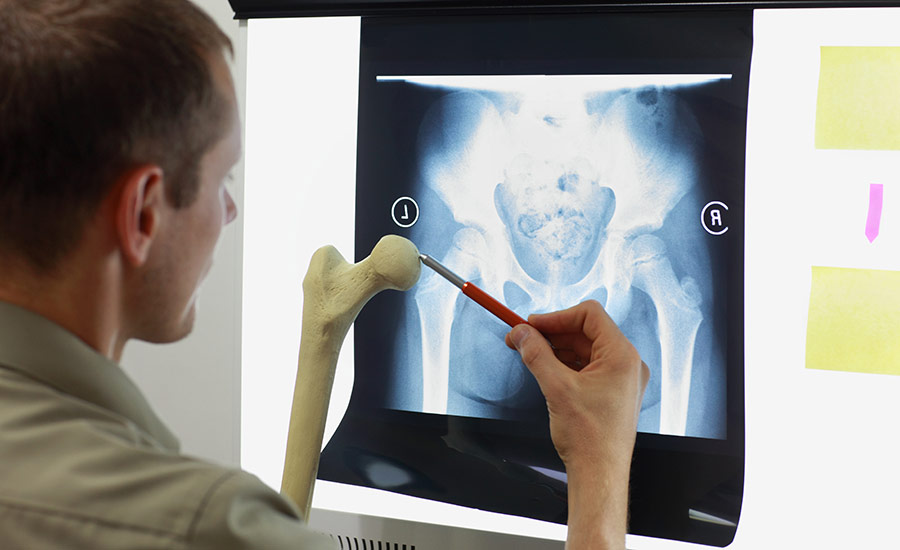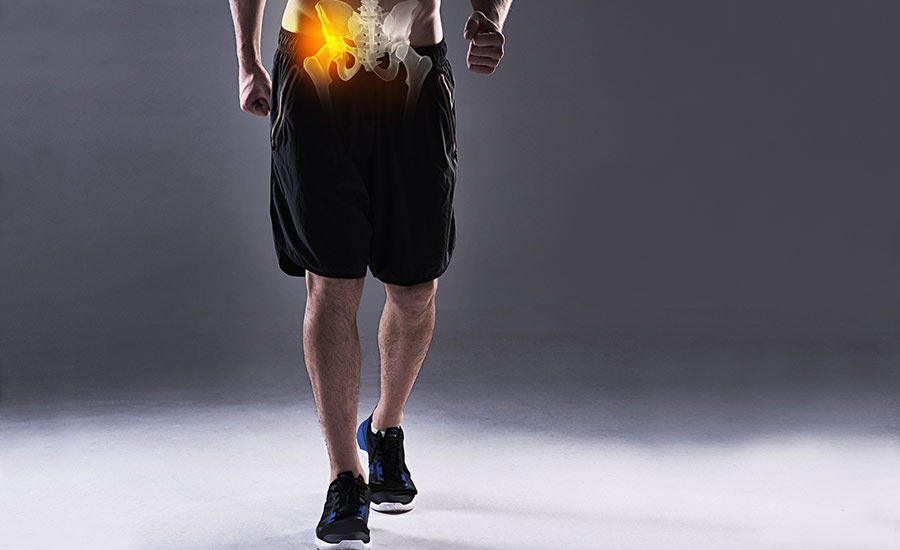
Have you sought relief from persistent joint pain through joint injections, only to find that they didn’t provide the relief you were hoping for? If so, you’re not alone.
While joint injections can be an effective method for managing joint pain and inflammation for many people, they are not a one-size-fits-all solution.
We’ll explain what next if facet joint injections don’t work, by proving our alternative treatment solutions at OrthoEast that can help you manage your joint pain so you can reclaim your quality of life.
What is a Facet Injection?
Facet injection is a type of medical treatment often used to alleviate back or neck pain. It is named after facet joints, which are pairs of small joints found along the spine that contribute to the spine’s flexibility and stability.
Inflammation in facet joints can trigger pain in various parts of the body, depending on where the joint is located.
The regions where pain or discomfort might be felt include:
- Groin area
- Spine
- Shoulders or neck
- Legs or arms
- Buttocks
Facet joint injections are typically comprised of a mixture of a local anesthetic and a corticosteroid. The anesthetic serves to numb the area and provide immediate pain relief, while the corticosteroid works to reduce the inflammation that’s causing the pain.
This procedure is minimally invasive and typically performed on an outpatient basis. It may provide temporary or prolonged relief from pain and inflammation, depending on the individual’s condition and response to the injection.
It’s important to understand that facet joint injections do not cure the underlying defect in the bone. They are primarily used for pain management and are often most effective when used as part of a comprehensive treatment plan that may include physical therapy, strengthening exercises and in some cases, surgical intervention.
What Conditions Are Treated Using Facet Joint Injections?
Facet joint injections are used to alleviate pain and inflammation in the facet joints caused by a variety of conditions, including:
Facet Joint Syndrome
Facet joint syndrome, also known as osteoarthritis of the spine, is a condition that involves the degeneration and inflammation of the facet joints. These joints are located between the vertebrae in the spine and they allow for movement and flexibility.
This condition occurs when the facet joints become worn or torn, resulting in pain and discomfort. This can be due to aging, injury or degenerative conditions like osteoarthritis.
Facet joint injections help by numbing the area and providing immediate pain relief, while corticosteroid helps to reduce inflammation within the joint, which can provide longer-term pain relief.
Spinal Stenosis
Spinal stenosis is a condition where the spaces within your spine narrow, which can put pressure on the nerves that travel through the spine.
Facet joint injections can help manage the symptoms of spinal stenosis by reducing inflammation and pain in the facet joints, which are often affected by this condition.
By reducing inflammation, the injections may help decrease pressure on the spinal nerves, potentially alleviating some of the symptoms caused by nerve compression, such as pain, numbness and weakness.
Spondylolysis
This is a defect or stress fracture in the pars interarticularis of the vertebrae. It can cause lower back pain after exercise or activities that involve the use of lower back muscles.
Facet joint injections can be used to manage this pain. When administered into or around the affected facet joint, they can provide pain relief by reducing inflammation in the joint and numbing the affected area.
Sciatica
Sciatica is a term used to describe symptoms of pain, numbness or weakness that radiate along the sciatic nerve from the lower back to the buttock and leg.
The sciatic nerve is the longest nerve in your body, running from the back of your pelvis all the way down both legs, ending at your feet.
It’s important to remember that while facet joint injections can provide temporary relief from the symptoms of sciatica, they do not treat the underlying cause of nerve compression. A comprehensive treatment approach, which may include sciatica stretches, physical therapy, medication and possibly surgery is typically necessary for longer-term relief.
Herniated Disc
A herniated disc, also known as a slipped or ruptured disc, occurs when the soft center of a spinal disc pushes through a crack in the tougher exterior casing.
The facet joints are located very close to the spinal nerves. If these joints become inflamed, they can contribute to the compression or irritation of these nerves, adding to the pain caused by a herniated disc.
The way joint injections help is by alleviating some of the pressure on the nerves and providing some degree of pain relief.
Arthritis
Arthritis is inflammation of the joints, which can cause pain, stiffness and reduced mobility. When arthritis affects the facet joints in the spine, it can lead to back or neck pain. Depending on the location, this pain can potentially radiate to other parts of the body.
Facet joint injections can help manage pain and inflammation in people with arthritis — particularly those with osteoarthritis or rheumatoid arthritis that affects the spine. It’s important to note that while facet joint injections can help manage the symptoms of arthritis, they do not reverse the arthritis or cure the condition.
In general, facet joint injections do not cure more serious defects in the bone. They are primarily used for pain management and are often most effective when used as part of a comprehensive treatment plan.
How Can Facet Joint Injections Help?
Facet joint injections can offer significant benefits to individuals dealing with chronic joint pain.
Facet joint injections offer:
- Pain relief: The primary purpose of facet joint injections is to relieve pain. The local anesthetic provides immediate relief by numbing the area around the facet joint, while the corticosteroid helps to reduce inflammation, which can provide longer-lasting pain relief.
- Improved mobility: By reducing pain and inflammation, facet joint injections can increase a patient’s range of motion and overall mobility, enabling them to return to daily activities and improve their quality of life.
- A diagnostic tool: Facet joint injections also serve a diagnostic purpose. If a patient experiences pain relief after an injection, it can confirm that the facet joints were the source of the pain. This can help guide future treatment decisions.
- An alternative to surgery: For some patients, facet joint injections can provide enough pain relief to postpone or even avoid more invasive procedures like surgery. However, it’s important to note that these injections typically do not cure the underlying issue causing the pain, such as arthritis or degenerative disc disease.
- Part of a comprehensive treatment plan: While facet joint injections can provide significant pain relief, they are most effective when used as part of a comprehensive treatment plan. This might include physical therapy, medication management, lifestyle modifications and other interventional procedures

What Happens If Facet Joint Injections Don’t Work?
If facet joint injections do not provide the expected relief or if the pain relief is only temporary, there are several other treatment options to consider:
Repeat injections: Sometimes, a single facet joint injection might not provide long-lasting pain relief. In this case, repeat injections might help.
- Physical therapy: Physical therapy can be a vital part of managing chronic pain conditions. Physical therapists can design a personalized exercise regimen that improves strength, flexibility, and mobility, and helps reduce pain.
- Medication management: Pain can often be managed with appropriate medication. Nonsteroidal anti-inflammatory drugs (NSAIDs), muscle relaxants, or in some cases, opioids, might be prescribed. Additionally, medications that specifically target nerve pain could be beneficial.
- Alternative therapies: Treatments such as acupuncture, massage therapy and chiropractic care might help manage pain when traditional methods are not effective.
- Nerve blocks or ablation: If the pain is definitively coming from the facet joints, a more permanent solution might be a nerve block or nerve ablation. This procedure involves disrupting the nerve supply to the painful joint.
- Surgery: If less invasive treatments are not effective, and the pain is significantly impacting quality of life, surgical interventions may be considered.
Facet Joint Injection Alternatives at OrthoEast
While facet joint injections can be an important tool in the management of joint pain, they mainly offer a short-term solution instead of long-lasting results — especially in conditions such as arthritis or degenerative disc disease.
If facet joint injections are not helping and you’re still experiencing pain, our specialists at OrthoEast will work with you to identify a treatment plan that will provide lasting relief.
Our alternatives for facet joint injections at OrthoEast include:
Minimally Invasive Spine Surgery
Minimally invasive spine surgery may be considered as a next step when treatments like facet joint injections don’t provide sufficient pain relief.
While facet joint injections can provide temporary relief, minimally invasive spine surgery addresses the underlying spinal condition that is causing the pain, potentially providing a longer-term solution.
Minimally invasive surgery can often more precisely target the source of the pain than injections or other conservative treatments, leading to more effective pain relief.
Alternatives to Spinal Fusion
At OrthoEast, we offer various spinal fusion alternatives that may provide effective pain relief with fewer risks and drawbacks such as:
- Decompression procedures: We use these procedures to remove or trim bone and tissue that’s pressing on spinal nerves.
- Radiofrequency ablation: In this procedure we use heat generated by radio waves to target specific nerves and temporarily interfere with their ability to transmit pain signals.
- Microdiscectomy: We use this minimally invasive surgical procedure that is commonly used to treat sciatica caused by a herniated disc in the lower back.
- Laminectomy without fusion: We use this procedure to remove the back portion of a vertebra in order to relieve pressure on the spinal cord or nerves.
- Artificial discs: Instead of fusing the vertebrae together, we replace the damaged disc with an artificial one.

Still in Pain After Facet Joint Injections? Schedule an Appointment With OrthoEast
Our specialists at OrthoEast take a conservative-first approach to diagnostics and treatment before suggesting surgical procedures. All of our orthopedic specialists are board-certified and patient focused.
If you are experiencing joint pain that is not responding to non-operative treatments such as facet joint injections, our team will help you determine the right alternative approach to treatment. Our surgeons specialize in:
- Minimally invasive spine surgery
- Alternatives to spinal fusion
We’ll work together to find the root cause of your pain and determine the best option to ensure that you find long-term pain relief.
We have locations throughout New Jersey and New York, where we provide the highest quality of care. Meet our physicians, discover the treatment plan that’s right for you and find lasting pain relief.



